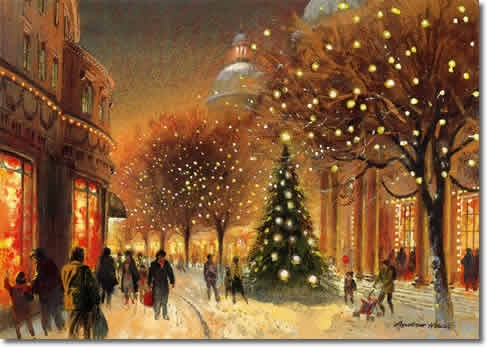More Than Gold: Unpacking the Themes of Sacrifice and Beauty in "The Happy Prince"
In the world of classic literature, few stories are as poignant and heartbreakingly beautiful as Oscar Wilde's "The Happy Prince." On the surface, it is a fairytale about a talking statue and a compassionate bird. But beneath its shimmering, gilded exterior lies a profound and searing critique of social inequality, a deep exploration of the nature of true beauty, and a timeless testament to the transformative power of love and sacrifice.
Wilde's story is a masterwork that challenges us to look beyond appearances and discover the value hidden in the things and people a superficial world is all too quick to discard.
From Ignorant Bliss to Painful Empathy
The story introduces us to the magnificent statue of the Happy Prince, perched high above the city. He is a marvel of craftsmanship, gilded with fine gold, with sapphires for eyes and a ruby on his sword-hilt. The townspeople admire him for his beauty, seeing him as a symbol of joy. A sensible mother tells her crying child, "The Happy Prince never dreams of crying for anything."
But this perception is a tragic irony. The Prince explains to a visiting Swallow that when he was alive, he lived in the Palace of Sans-Souci ("Without Sorrow"), shielded from the realities of the world. He was "happy" only because he was ignorant. Now, fixed to his high pedestal, he is forced to witness all the "ugliness and all the misery" of his city, and his leaden heart is filled with a sorrow he never knew in life. His journey is one of awakening from the shallow pleasure of the palace to the profound pain of empathy.
The Messenger of Mercy: The Transformation of the Swallow
The agent of the Prince's will is the Swallow, a character who undergoes his own profound transformation. Initially, the Swallow is self-absorbed and slightly cynical. He has stayed behind from his flock's migration to Egypt for a frivolous love affair with a Reed, and his primary goal is to rejoin his friends in the warm south.
He is initially reluctant to help the weeping Prince, seeing the task as a delay. He agrees to stay for "one night" merely out of pity. However, with each act of charity he performs on the Prince's behalf, he experiences a strange and unfamiliar feeling. After delivering the ruby to a poor seamstress, he remarks:
"It is curious, but I feel quite warm now, although it is so cold." "That is because you have done a good action," said the Prince.
This inner warmth the glow of compassion slowly becomes more important to the Swallow than the warmth of the Egyptian sun. His journey from a self-interested migrant to a selfless companion is a powerful narrative of how true love is found not in flirtation, but in shared purpose and sacrifice.
Where True Beauty is Found in Sacrifice
The core of the story unfolds through a series of selfless acts. The Prince systematically strips himself of every beautiful and valuable part of his form to help the suffering people of his city:
The ruby from his sword is given to a seamstress for her sick boy.
A sapphire eye is given to a starving playwright to buy food and firewood.
His other sapphire eye is given to a poor match-girl so she will not be beaten by her father.
Finally, blind and stripped of his jewels, he commands the Swallow to peel off his golden leaves, one by one, to give to the starving children. As the Prince becomes outwardly "dull and grey," his inner beauty and true worth reach their absolute peak. Wilde masterfully argues that value lies not in what one possesses, but in what one gives away.
A Society That Values Ornaments Over Empathy
Wilde saves his sharpest social critique for the town's Mayor and Councillors. When they see the now-drab statue, their reaction is one of pure disgust. "Dear me! how shabby the Happy Prince looks!" the Mayor exclaims. Their final verdict is chilling in its superficiality:
"As he is no longer beautiful he is no longer useful."
They tear down the statue and melt it in a furnace to create a new statue of the Mayor himself—the ultimate act of vanity. However, they encounter a problem: the Prince's broken leaden heart will not melt. This indestructible heart is the story's most powerful symbol. While the world can melt down and repurpose superficial gold, it cannot destroy the essence of true compassion and love. The workmen, seeing no value in it, throw the heart on a dust-heap where the loyal Swallow has also died from the cold.
The Two Most Precious Things
The story concludes with a beautiful and transcendent final act of validation. God asks one of his Angels to bring him the two most precious things in the city. The Angel flies down and returns with the broken leaden heart and the dead bird.
"You have rightly chosen," God says, "for in my garden of Paradise this little bird shall sing for evermore, and in my city of gold the Happy Prince shall praise me."
In this final moment, Oscar Wilde delivers his timeless message. In a world that blindly values gold and appearances, the greatest treasures are often hidden, broken, and discarded. True beauty is not found in gilded statues, but in the radical, heartbreaking, and eternal power of compassionate sacrifice.




Comments
Post a Comment